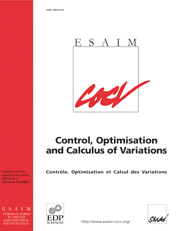Crossref Citations
This article has been cited by the following publications. This list is generated based on data provided by Crossref.
Giambò, Roberto
2002.
Global variational methods on a class of nonsmooth nonholonomic constraints.
Nonlinear Analysis: Real World Applications,
Vol. 3,
Issue. 3,
p.
431.
Cherkasov, O. Yu.
and
Zarodnyuk, A.V.
2015.
Brachistochrone Problem with Coulomb Friction and Viscous Drag: Qualitative Analysis∗∗This research was supported by the Russian Foundation for Basic Research, project 14-08-01130..
IFAC-PapersOnLine,
Vol. 48,
Issue. 11,
p.
1018.

